
POWDER METALLURGY AND METAL CERAMICS
Scope & Guideline
Pioneering Research in Advanced Material Development
Introduction
Aims and Scopes
- Powder Production and Processing Techniques:
Research on various methods for producing metal and ceramic powders, including advanced techniques like spark plasma sintering, gas atomization, and mechanical milling. - Characterization of Materials:
Studies focusing on the physical, chemical, and mechanical characterization of powders and sintered materials, including microstructural analyses and property evaluations. - Applications of Powder Metallurgy:
Exploration of practical applications for powder metallurgy in various industries such as aerospace, automotive, and biomedical engineering, emphasizing functional and structural materials. - Thermodynamic and Kinetic Studies:
Investigations into the thermodynamic properties of alloys and the kinetics of phase transformations during processing, which are crucial for optimizing material performance. - Composite Materials Development:
Research on the synthesis and properties of metal and ceramic composites, particularly those enhanced with nanostructured reinforcements and high-entropy materials.
Trending and Emerging
- High-Entropy Alloys and Ceramics:
A significant increase in research regarding high-entropy materials, which offer unique properties and potential applications in extreme environments, is evident, showcasing a trend towards materials with enhanced performance. - Additive Manufacturing and 3D Printing:
The rise of additive manufacturing techniques, particularly in the context of powder metallurgy, is becoming more prominent, indicating a shift towards innovative fabrication methods that allow for complex geometries and custom designs. - Nano-structured and Composite Materials:
There is a growing interest in the development and characterization of nano-structured materials and composites, which promise improved mechanical, thermal, and electrical properties for a variety of applications. - Sustainability and Recycling in Powder Metallurgy:
Emerging themes around sustainable practices and the recycling of metal powders highlight the industry's response to environmental concerns, focusing on the lifecycle and reusability of materials. - Thermal Barrier Coatings and Wear-Resistant Materials:
An increasing number of studies are dedicated to thermal barrier coatings and wear-resistant materials, reflecting the industry's need for components that can withstand harsh operational conditions.
Declining or Waning
- Traditional Powder Metallurgy Techniques:
There is a noticeable decrease in studies centered around conventional powder metallurgy methods, as the field increasingly embraces more advanced techniques like additive manufacturing and nanotechnology. - Basic Alloy Studies:
Research focusing solely on basic alloy systems without the application of advanced processing or composite techniques appears to be waning, as the emphasis shifts toward more complex materials and innovative applications. - Standard Coating Techniques:
The prevalence of studies on traditional coating methods is declining, with a growing preference for novel coating techniques such as laser processing and cold spraying that offer improved performance characteristics.
Similar Journals

REFRACTORIES AND INDUSTRIAL CERAMICS
Elevating Standards in Refractory MaterialsREFRACTORIES AND INDUSTRIAL CERAMICS is a prestigious journal published by Springer, dedicated to the field of ceramics and composite materials. With an ISSN of 1083-4877 and an E-ISSN of 1573-9139, this journal plays a pivotal role in fostering advances in the development, formulation, and application of refractories and industrial ceramics. The journal has been actively publishing since 1996 and is recognized for its contribution to the academic discourse in the ceramics community. Although it currently holds a Q4 ranking in both Ceramics and Composites and Materials Chemistry categories, it serves as an important platform for emerging research trends and innovations, making it essential reading for researchers, professionals, and students engaged in material science. While access is not open, the journal ensures that high-quality research reaches its audience, reflects the evolving landscape of the ceramics industry, and encourages interdisciplinary collaboration.

Ceramics-Switzerland
Fostering Collaboration in the World of CeramicsCeramics-Switzerland is a prominent open-access journal published by MDPI, dedicated to advancing knowledge in the field of ceramics and materials science. Established in 2018, this journal serves as a vital platform for researchers, professionals, and students to disseminate innovative research and technology in ceramics and composites. With an impressive impact factor and a categorized ranking of Q2 in Ceramics and Composites and Q3 in Miscellaneous Materials Science for 2023, Ceramics-Switzerland signifies its growing influence and contribution to the scientific community. The journal is indexed in Scopus, where it boasts a rank that highlights its competitive standing within the field. Being an open access journal enables the wide distribution of research findings, fostering greater collaboration and knowledge sharing among scholars and industry experts globally.

METALS AND MATERIALS INTERNATIONAL
Exploring innovative breakthroughs in metals and materials.METALS AND MATERIALS INTERNATIONAL, published by the Korean Institute of Metals and Materials, is a prestigious journal dedicated to the advancement of research in the fields of materials science and engineering. With an ISSN of 1598-9623 and a robust e-ISSN of 2005-4149, this journal has established itself as a crucial platform for disseminating innovative findings and key advancements that span condensed matter physics, materials chemistry, mechanics of materials, and the technology of metals and alloys. Its Q1 rankings in multiple categories attest to its high impact and relevance in the academic community, placing it among the top journals in its fields with Scopus rankings that reflect a strong international footprint. Here, researchers, professionals, and students can access cutting-edge research and insights, fostering collaboration and exploration of new materials and their applications. With a commitment to excellence and a convergence of knowledge from 1996 to 2024, METALS AND MATERIALS INTERNATIONAL continues to enhance our understanding of materials and their transformative impact on technology and engineering.

INTERNATIONAL JOURNAL OF POWDER METALLURGY
Fostering Interdisciplinary Collaboration in Powder MetallurgyInternational Journal of Powder Metallurgy, published by the American Powder Metallurgy Institute, is a prestigious periodical dedicated to advancing the field of powder metallurgy and its applications in various engineering disciplines. With its ISSN 0888-7462, this journal has roots tracing back to 1969, showcasing a wealth of research and innovations up to 2022. Although it currently ranks in the fourth quartile in both Industrial and Manufacturing Engineering and Metals and Alloys categories, it serves as a vital platform for sharing new findings, technical advancements, and discussions in powder metallurgy. Despite not being an open access journal, it remains an important resource for researchers, professionals, and students striving to deepen their understanding and expertise within this niche field. The journal’s content not only reflects the ongoing trends in materials science but also encourages interdisciplinary collaboration, making it an essential read for anyone involved in the study and application of powder metallurgy.
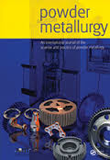
POWDER METALLURGY
Leading the Charge in Advanced Materials SciencePOWDER METALLURGY, with ISSN 0032-5899 and E-ISSN 1743-2901, is a prestigious journal published by SAGE Publications Inc, located in the United Kingdom. Founded in 1958, the journal has been a pivotal platform for the dissemination of innovative research and advancements in the fields of ceramics and composites, condensed matter physics, materials chemistry, and the mechanics of materials. With a commendable impact factor and consistently ranked in the second quartile across multiple categories, POWDER METALLURGY is recognized for its rigorous peer-review process and high-quality articles. The journal is an essential resource for researchers, professionals, and students seeking the latest insights and developments in powder metallurgy and allied materials science disciplines. While it does not offer open access options, readers can access a wealth of information that underscores the journal's commitment to serving as a foundational reference in the progressing landscape of materials science and engineering.
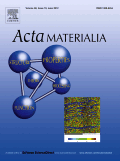
ACTA MATERIALIA
Pioneering Discoveries in Ceramics, Metals, and PolymersACTA MATERIALIA is a premier journal in the field of materials science, published by PERGAMON-ELSEVIER SCIENCE LTD. With an ISSN of 1359-6454 and an E-ISSN of 1873-2453, this esteemed journal serves as a vital platform for disseminating high-quality research across various critical domains, including ceramics and composites, electronic, optical and magnetic materials, metals and alloys, and polymers and plastics. Recognized for its impact in the field, ACTA MATERIALIA boasts a remarkable standing, featuring a Q1 ranking in multiple categories as of 2023, solidifying its importance among the top journals in materials science. Researchers and professionals benefit from open access options, ensuring that groundbreaking findings are available to a global audience. Operating out of the United Kingdom, ACTA MATERIALIA strives to advance knowledge and innovation within the materials science community, making it an invaluable resource for academics, industrial professionals, and students dedicated to the future of material engineering and technology.
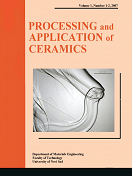
Processing and Application of Ceramics
Connecting Research and Practical Applications in CeramicsProcessing and Application of Ceramics is a prominent open-access journal dedicated to the advancement of knowledge in the field of ceramics and composites. Published by the University of Novi Sad, Faculty of Technology in Serbia, this journal has been fostering research and innovation since its inception in 2007. With its ISSN 1820-6131 and E-ISSN 2406-1034, this journal is indexed in Scopus, where it holds a ranking of #82 out of 127 in the Materials Science category, placing it in the 35th percentile and within the Q3 quartile as of 2023. Spanning a convergence period from 2014 to 2024, the journal serves as a vital platform for researchers, professionals, and students alike, eager to explore the latest developments in ceramic materials, their processing techniques, and practical applications. The journal's commitment to accessibility and quality makes it an essential resource for those aiming to stay at the forefront of ceramics research.
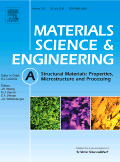
MATERIALS SCIENCE AND ENGINEERING A-STRUCTURAL MATERIALS PROPERTIES MICROSTRUCTURE AND PROCESSING
Transforming Research into Revolutionary Materials InsightsMATERIALS SCIENCE AND ENGINEERING A-STRUCTURAL MATERIALS PROPERTIES MICROSTRUCTURE AND PROCESSING, published by ELSEVIER SCIENCE SA, is a highly regarded journal specializing in the fundamental and applied aspects of materials science. Since its inception in 1988, this journal has established itself as a leading platform for disseminating innovative research findings, particularly focused on structural materials, their properties, microstructure, and processing techniques. With a prominent impact in the field, it ranks in the Q1 category across several disciplines including Condensed Matter Physics, Materials Science, Mechanical Engineering, and Nanoscience and Nanotechnology, highlighting its significance and influence within the academic community. The journal is accessible to a global audience of researchers, professionals, and students, underscoring its commitment to advancing knowledge in materials engineering. Aspiring authors and readers will find this journal an essential resource for cutting-edge research and the latest advancements in the field, further supported by its impressive Scopus rankings that place it among the top-tier publications.
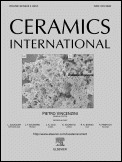
Ceramics International
Elevating the standards of ceramics research worldwide.Ceramics International is a premier journal published by ELSEVIER SCI LTD, focusing on advancing the field of materials science with a specific emphasis on ceramics and composites. With an impressive impact factor and a top-tier standing in several critical categories, including Q1 rankings in Ceramics and Composites, Electronic, Optical and Magnetic Materials, and Materials Chemistry, this journal serves as a crucial resource for researchers and professionals alike. Established in 1981, it has consistently showcased cutting-edge research in various domains, including surfaces, coatings, and process chemistry technologies, making it invaluable for those advancing theoretical and practical knowledge in these areas. While access is through subscription, the journal’s rich content, profound insights, and rigorous peer-review process ensure high-quality articles that contribute meaningfully to the scientific community. By fostering innovation and collaboration through rigorous research, Ceramics International stands out as an authoritative source for those dedicated to the evolution of materials science.
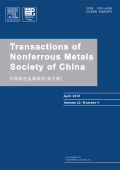
TRANSACTIONS OF NONFERROUS METALS SOCIETY OF CHINA
Fostering excellence in materials science and engineering.TRANSACTIONS OF NONFERROUS METALS SOCIETY OF CHINA, published by Elsevier, is a premier academic journal that serves as a vital platform for researchers and professionals specializing in materials science, condensed matter physics, geotechnical engineering, and engineering geology. Established in 1994, this esteemed publication has maintained a robust focus on the latest developments in the nonferrous metals sector, reflecting its significant impact in the field with a Q1 categorization across multiple disciplines. With impressive Scopus rankings—placing it in the top 20% of journals in relevant categories—this journal is recognized for its quality and rigor, providing critical insights into metals and alloys, materials chemistry, and their applications. The non-open access format ensures a dedicated readership among professionals and academics seeking substantial and authoritative research articles. By fostering knowledge exchange, the journal strives to advance the understanding and application of nonferrous metals, making it an essential resource for anyone involved in material innovations and engineering solutions.